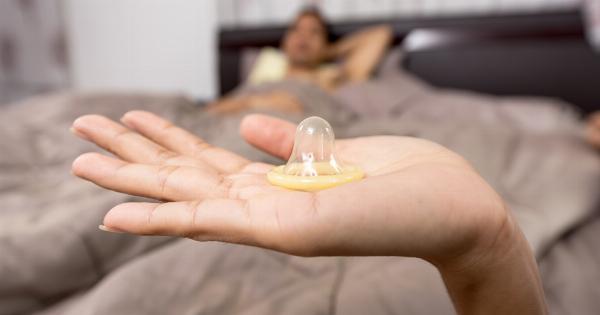Welcome to the ultimate guide to condom use! Whether you’re a beginner or someone looking to brush up on your knowledge, this comprehensive guide will provide you with all the information you need to ensure safe and effective condom use.
From choosing the right condom to proper storage and disposal, we’ve got you covered.
1. Why Use Condoms?
Condoms are a barrier method of contraception that not only prevent unwanted pregnancies but also protect against sexually transmitted infections (STIs). They are highly effective when used correctly and consistently.
Moreover, condoms are easily accessible and, unlike other contraceptive methods, do not require a prescription.
2. Types of Condoms
There are various types of condoms available in the market, catering to different preferences and needs. Some common types include:.
- Latex Condoms: Latex condoms are the most widely available and effective type of condoms. They are affordable, offer excellent protection against STIs and unintended pregnancies, and are compatible with both water-based and silicone-based lubricants.
- Polyurethane Condoms: Polyurethane condoms are a good alternative for individuals allergic to latex. They are also effective against STIs and unintended pregnancies. However, they are more expensive and less flexible compared to latex condoms.
- Lambskin Condoms: Lambskin condoms provide protection against unintended pregnancies but are not effective against most STIs, including HIV. They offer a natural feel but can be expensive and have a higher risk of breakage.
3. How to Choose the Right Size
Proper condom size is crucial for comfort and effectiveness. Ill-fitting condoms may slip off or break during intercourse. To determine the right size, measure the length and girth of the erect penis.
Most condoms are categorized as small, regular, or large. Consider trying different brands and styles to find the one that fits best.
4. How to Properly Put on a Condom
Using condoms correctly is essential to maximize their effectiveness. Follow these steps for proper condom application:.
- Check the expiration date: Always ensure that the condom is within its expiration date.
- Open the package carefully: Use your fingers to tear the wrapper rather than using sharp objects that may damage the condom.
- Pinch the tip: Pinch the reservoir tip of the condom to leave some space for the ejaculate.
- Roll it down: Unroll the condom over the erect penis, making sure it is completely covered.
- Smooth out any air bubbles: Air bubbles can lead to condom breakage. Gently squeeze the air out while rolling down the condom.
5. Lubrication and Condoms
Lubrication plays a vital role in preventing condom breakage and enhancing overall pleasure. There are two types of lubricants commonly used with condoms:.
- Water-based lubricants: These are compatible with all types of condoms and are readily available. However, they may dry out more quickly and require reapplication.
- Silicone-based lubricants: These provide longer-lasting lubrication and are suitable for use in water or during anal intercourse. However, they may not be compatible with all types of condoms, so check the packaging before use.
6. When to Avoid Oil-Based Lubricants
It’s important to note that oil-based lubricants, such as petroleum jelly, mineral oil, or massage oils, should not be used with latex or polyurethane condoms. These substances can weaken the material, leading to breakage or slippage.
If you prefer oil-based lubrication, opt for lambskin condoms instead.
7. Condoms and Oral Sex
While condom use during oral sex may not be as common, it can still provide protection against STIs, including gonorrhea, chlamydia, and syphilis.
Consider using flavored condoms specifically designed for oral sex or unflavored condoms to minimize any taste or odor.
8. Storage and Expiration
Proper storage is crucial to maintain the integrity of condoms:.
- Store in a cool, dry place: Condoms should be stored away from direct sunlight and extreme temperatures.
- Check for damage: Before use, inspect the condom for any signs of damage, such as tears, holes, or brittleness.
- Expiration date: Always check the expiration date to ensure the condom is still effective.
9. Condom Disposal
Proper condom disposal is essential for hygiene and to prevent unintended pregnancies or the spread of STIs:.
- Wrap it up: After ejaculation, hold the condom at the base and carefully withdraw the penis. Tie a knot at the open end to prevent spillage.
- Dispose of responsibly: Wrap the used condom in tissue or a wrapper and dispose of it in a trash bin. Avoid flushing condoms down the toilet, as they can cause plumbing issues.
10. Talking About Condoms
Open communication is key when it comes to condom use. Discussing condom usage with your partner promotes mutual respect, trust, and ensures the sexual health and well-being of both partners. Remember, using condoms is a shared responsibility.




























